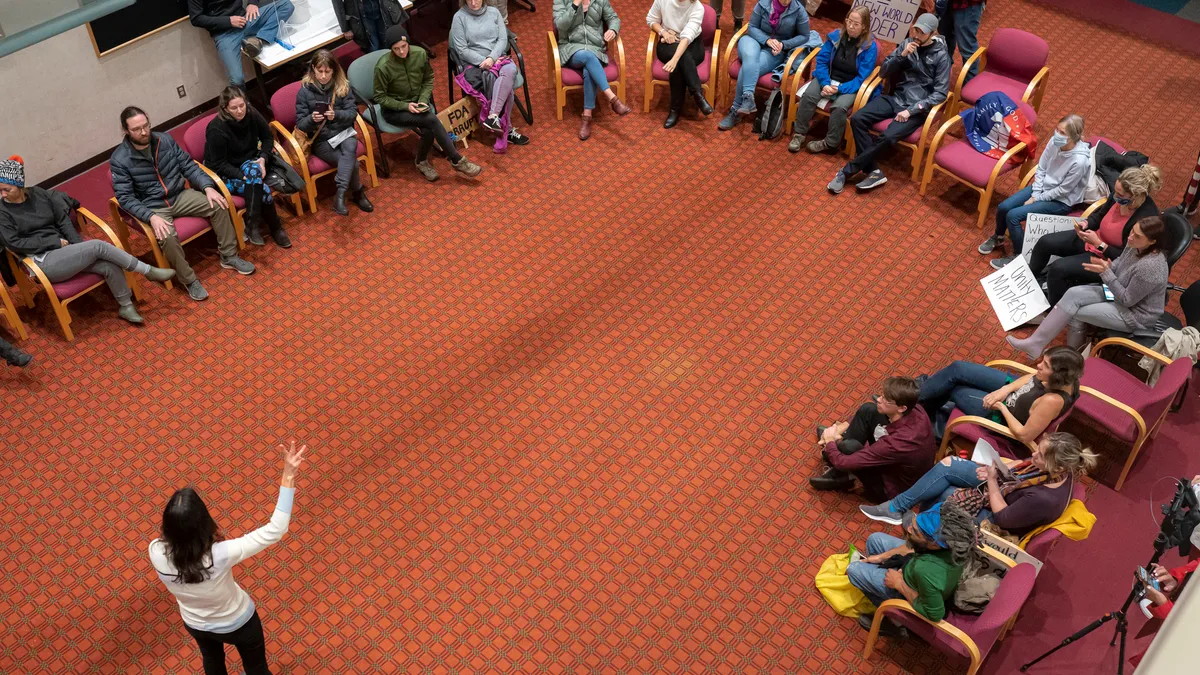Dive Brief:
- As school communities continue to face challenges with divisive public arguments over curriculum and COVID-19 protocols, AASA, the School Superintendents Association, and the National School Public Relations Association are partnering to launch a Leadership in School Communication Program.
- The program encourages superintendents and their communications staff to work in teams as they participate in one in-person and four virtual learning modules focused on critical areas of communication leadership. The program will run from March to July.
- Moving forward, AASA Executive Director Daniel Domenech said he hopes the program will help develop clearer district communication that leads to a more civil and understanding environment in school communities.
Dive Insight:
Prior to the COVID-19 pandemic, many districts already viewed building communication skills, improving trust with parents and focusing on community engagement as areas for improvement, but the challenges of the past two years have further amplified that need.
Misinformation in school communities has floated around since the pandemic’s onset and been exacerbated by debates over critical race theory, which makes now an important time to focus on district-level communication and developing dialogues between school leaders and parents, Domenech said.
Ultimately, everything superintendents do in their work is to ensure the safety of students and staff, he said.
But school board meetings have become violent and educators have been verbally abused and attacked, Domenech said.
For example, Domenech pointed to a recent incident at a Page County School Board meeting in Virginia where a parent said she “will bring every single gun loaded and ready” if her children had to wear masks in school. The local police department has since charged the woman with a Class 1 misdemeanor for making an oral threat while on school property, the Daily News-Record reported.
“It’s a situation that we have never seen,” Domenech said. “It calls for the education establishment to be able to clearly and effectively communicate with the public, and particularly the parent community, what the issues are and explain why decisions are being made.”
The AASA-NSPRA program’s learning module topics include:
- Best practices in communication.
- Framing messages in a time of community divisiveness.
- Designing and delivering authentic community engagement.
- Telling districts’ stories through social and digital media.
- Taking control of media interviews.
Research around communications has found the more information parents receive from schools, the more they will be likely to actively support district efforts, said Barbara Hunter, executive director of NSPRA.
“Effective communication has never been more important and it’s been proven to be really successful in the past, and we need to dig in and continue our work and make sure that we don’t get sidetracked by the divisiveness,” Hunter said.
The program hopes to give education leaders the tools they need to be better communicators, Domenech said.
“Yes, they know how to stand in front of a class and teach, but in terms of public relations and communications, per se, they don’t necessarily understand the process,” he said.
That’s also why superintendents need to work closely with communications leaders on their team, finding ways to translate academic and research terms used to promote district initiatives into a language that everyone can understand, Hunter said.












